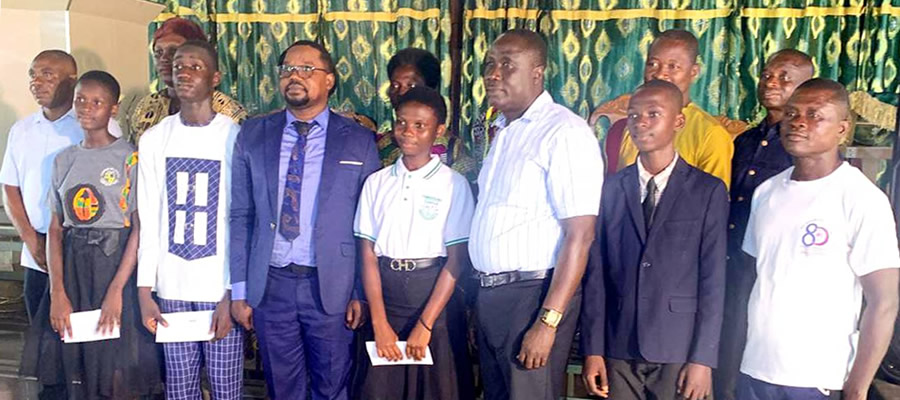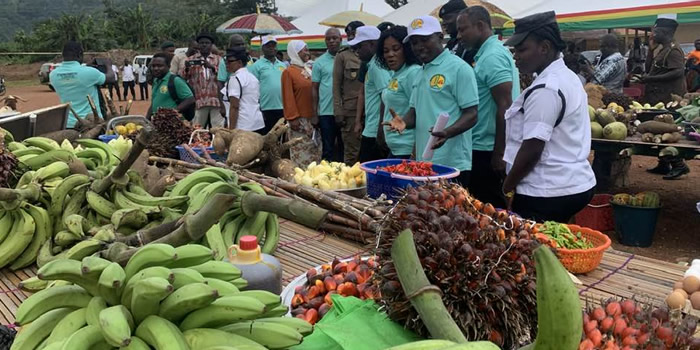

Poverty, Inequality and Social Protection
Vulnerability is the degree of exposure to risks. Vulnerability Analysis is therefore a tool for determining which segments of society are exposed to risk factors. Vulnerability occurs when human beings have to face harmful threat or shock with inadequate capacity to respond effectively. It helps in policy formulation to address challenges and problems of these vulnerable groups which invariably include women, children in difficult circumstances (child poverty, child abuse, children in conflict with the law, child trafficking, child labour, orphans and vulnerable children), people in disaster prone areas, the aged, the poor, subsistence food crop farmers, people living with disabilities (PLWDAs) and people living with HIV/AIDS (PLHIVs), orphans and the unemployed.
The Department of Social Welfare/Community Development is one of the departments that have been charged in the district to champion the course of the vulnerable groups.
People affected by Risks and Shocks. There are two (2) categories of risks and shocks in the district. These are fire outbreaks and incidence of pests and diseases. The reasons why people who are affected by risk and shock are vulnerable include the following;
· Deprivation of shelter in cases of domestic fire outbreaks,
· Deprivation of security
· Low productivity of farmers who experience bush fires or domestic fire outbreaks which results in a decrease in income levels.
· Inability to provide basic needs for households with experience of any of the two categories mentioned above.
Risks and shocks can be said to be activities or situation that exposes the vulnerable group such as children, women and the elderly to emotional and physical stress or pain. Risk and shocks can be categorized into two; natural and artificial. Natural risks and shocks are those hazards which cannot be predicted and gives no warning for its occurrence. Artificial risks and shocks on the other hand, are those which are accidentally caused by individuals.
One major group of people at risk is children of school going age who are not in school. They are normally those who are involved in activities such as; hawking on the streets and other seduced places. These children especially the females are prone to rape, defilement, teenage pregnancies and other sexual related diseases whilst the boys are normally caught up in armed robbery and related deviances.
Subsistence Farming The peasant farmers are confronted with over dependence on climate and that in the event of rain failure, the farmers do not have any alternative means such as irrigation or drought resistance crops which will enable them to recover their cost of investment.
In times of bumper harvest as a result of good rains, there is also glut on the market and the farmers are compelled to sell their produce at the prevailing market price since there are no price controls or storage facilities. The farmers also do not have access to information in relation to prices of produce outside the District or Region to enable them have better returns on their investment.
Poor road surface quality also affects marketing of farm produce as greater part of their produce are locked up in the farms due to limited accessibility. The net effect of the situations described is that farmers in the District hardly get good returns from their investment and as a result they are unable to take good care of themselves and their dependents
Abused Children
The incidence of child abuse, child trafficking, child poverty and rape are common phenomenon in most third world countries of which Ghana is not an exception. This subsection explains the occurrences and statistics of child vulnerability in the district in terms of child abuse, child trafficking, child poverty and rape or defilement. It also highlights the meanings and effects of these occurrences with respect to children. The breakdown and related explanations of these terms and statistics are shown in the subsequent sections.
Children are also identified in the district as belonging to the vulnerable group. Some children in the district are neglected by their biological parents who fail to send them to school. With the increased number in video and game centres in the district, children are found more comfortable at these centres moving from one centre to the other. Others also roam about in the community without any care from anybody, not even close relatives.
Child Abuse is the physical, sexual, emotional maltreatment or neglect of children by parents, guardians and others. There are several forms of child abuse according to the Department of Social Welfare/Community Development and these involve; Child Maintenance Cases, Paternity Cases, Welfare Cases and Domestic Violence.
Vulnerability defined as the probability of livelihood stress occurring in four main components. These are risk, exposure, response, and outcome. Risk is the probability of an event happening. Exposure includes the value of assets at risk and what will be lost if uncertain event occurs. Response is normally the function of decisions taken by households, institutions and civil society. Outcome is the result of impact of the shock which is usually the result of the interplay of risk, exposure, and response. In Obuasi East, the identified vulnerable groups are children from low income and broken homes, people living with HIV/AIDS (PLWA), rural, poor subsistence farmers and their dependents, persons with disabilities (PWD’s), the elderly and children engaged in labour. The Assembly with the help of central government has come up with programmes and projects to address the problem of vulnerability and exclusion. The programme involves the following:
· Leap programme for the elderly, orphans and their caretakers
· National health insurance scheme
· Support to people living with HIV/AIDS
· Child labour project
· School feeding programme
· Scholarship schemes for brilliant but needy children
· Support to the physically challenge
Challenges facing the Vulnerable Groups in the District
1. Inadequate funding for social protection interventions
2. High incidence of poverty among the youth and the aged
3. Prevalence of abuse, violence and exploitation of children including child trafficking and others worst forms of child labour.
COMMUNITY NEEDS ASSESSMENT, DEVELOPMENT ASPIRATIONS AND PRIORITISATION OF DISTRICT DEVELOPMENT ISSUES
Introduction
A problem could be simply explained as any inhibiting factors that work against the progressive development of a community, a district and the nation as a whole. Problem identification and assessment of community needs and development aspirations are the basis for effective and rational project planning and design. The identification of community problems and assessment of their needs therefore lead to the design of intervention mechanisms that guarantee sustainable qualitative and quantitative living conditions for the people.
Scarcity with respect to resources makes it imperative for conscious effort to be made in order to ensure orderly and efficient use of resources to achieve optimal utilization for the satisfaction of Human Needs. It is against this background that efforts have been made to collect data on the community problems, community needs and development aspirations. In line with this the concept of prioritization becomes paramount. Prioritization ensures efficient and effective allocation of resources to address issues in terms of their urgency.
This section of the report therefore spells out the processes involved in prioritization of the community needs. The development problems or issues of the district are subjected to POCC analysis and prioritization. Since the district Assembly’s financial resources will not be able to meet all the development needs and aspirations of all sectors of the district, there is the need to prioritise, so that the urgent needs are attended to first.
Date Created : 6/2/2023 12:00:00 AM












 facebook
facebook
 twitter
twitter
 Youtube
Youtube
 +233 593 831 280
+233 593 831 280 0800 430 430
0800 430 430 GPS: GE-231-4383
GPS: GE-231-4383 info@ghanadistricts.com
info@ghanadistricts.com Box GP1044, Accra, Ghana
Box GP1044, Accra, Ghana